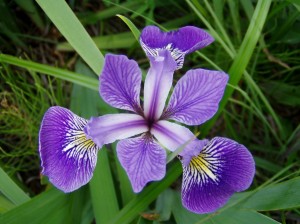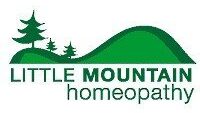
Natural, effective treatment of migraines and headaches. Our medicines eliminate migraines and headaches permanently with no side effects. Homeopathic medicines are safe, non-toxic, and gentle on the body. Homeopathic medicines stimulate the body to heal itself. Check out our Homeopathy FAQ to learn more about homeopathy.
Scientific Studies: Homeopathy for Headaches and Migraines
In this randomised, placebo controlled double blind study, 60 people suffering from migraine were treated using constitutional homoeopathy over a period of 4 months. Those patients in the control group experienced a reduction in migraine frequency from 9.9 attacks per month to 7.9 per month, while those in the treatment group reduced their monthly attack rate from 10 to between 1.8 and 3 per month.
Abstract
Objectives: The study objective was to evaluate the effectiveness of homeopathic medicines for the prevention and treatment of migraine in children.
Design: This was an observational, prospective, open, nonrandomized, noncomparative, multicenter study.
Setting/location: The study was conducted in 12 countries worldwide.
Subjects: Fifty-nine (59) physicians trained in the prescription of homeopathic medicines and 168 children, aged 5–15 years, with definite or probable migraine diagnosed using International Headache Society 2004 criteria were the subjects in this study.
Interventions: Physicians were given complete freedom in terms of treatment prescription; thus, prescriptions were individualized for each patient.
Outcome measures: The frequency, intensity, and duration of migraine attacks in the 3 months prior to inclusion were compared with those during the 3-month follow-up period. Pertinent data were collected using questionnaires completed by the doctor and the patient or his/her parent/guardian. The secondary outcome measure was the impact of homeopathic medicines on education, measured as absence from school.
Results: The frequency, severity, and duration of migraine attacks decreased significantly during the 3-month follow-up period (all p<0.001). Preventive treatment during this time consisted of homeopathic medicines in 98% of cases (mean=2.6 medicines/patient). Children spent significantly less time off school during follow-up than before inclusion (2.0 versus 5.5 days, respectively; p<0.001). The most common preventive medicines used wereIgnatia amara (25%; mainly 9C), Lycopodium clavatum (22%), Natrum muriaticum (21%), Gelsemium (20%), andPulsatilla (12%; mainly 15C). Homeopathy alone was used for the treatment of migraine attacks in 38% of cases. The most commonly used medicines were Belladonna (32%; mainly 9C), Ignatia amara (11%; mainly 15C), Iris versicolor (10%; mainly 9C), Kalium phosphoricum (10%; mainly 9C), and Gelsemium (9%; mainly 15C and 30C).
Conclusions: The results of this study demonstrate the interest of homeopathic medicines for the prevention and treatment of migraine attacks in children. A significant decrease in the frequency, severity, and duration of migraine attacks was observed and, consequently, reduced absenteeism from school.
Abstract
This study describes the results obtained from a prospective observational research of homeopathic treatment for patients suffering from headache (migraine with- and without aura and tension-type headache). Fifty-three patients were asked to complete the SF-36 questionnaire at the beginning of the treatment and after 4-6 months. The homeopathic medicine and potency were not pre-defined, but were adapted to each single patient according to individualised homeopathic prescription. Most patients (73.6%) completed the study. There was heterogeneity in the answers (patients in very poor health as well as those with only slight disorders). Analysis of the data according to the concept of ‘intention-to-treat’ showed that after therapy, the mean and median scores of all life quality dimensions rose. More than 60% of the cases experienced an improvement in pain and the limitations caused by pain, as well as in limitations in social activities and health in general. All the differences between pre/post post treatment were statistically highly significant, with the strongest results in the ‘bodily pain’ and ‘vitality’ parameters (P < 0.0001).
This cohort study, carried out in Germany, examined the outcomes of homeopathic treatment compared to the orthodox medical treatment of 493 people suffering from a range of chronic illnesses including headache, lower back pain, insomnia, depression, bronchial asthma, atopic dermatitis and allergic rhinitis. The patients’ assessments, taken at 6 months and 12 months from the beginning of the treatment, found that homeopathy provided a greater level of improvement in their illnesses than orthodox medical intervention. This difference appeared to be more pronounced in children than in adults. In regard to the cost of each type of therapy, this study showed these costs to be similar to each other.
Objectives and background: The objective of this study was to evaluate treatment details and possible effects of an individualized homeopathic treatment in patients with migraine in usual care.
Design: This was a prospective multicenter observational study. Consecutive patients beginning homeopathic treatment in primary care practices were evaluated over 2 years using standardized questionnaires. The data recorded included diagnoses (International Classification of Diseases, Ninth Revision) and current complaints, including their severity (numeric rating scale = 0–10), health-related quality of life (QoL, 36-item Short-Form Health Survey), medical history, consultations, homeopathic and conventional treatments, as well as other health service use.
Results: Two hundred and twelve (212) adults (89.2% women), mean age 39.4 ± 10.7 years were treated by 67 physicians. Patients had suffered from migraine for a period of 15.2 ± 10.9 years. Most patients (90.0%) were conventionally pretreated. The physician workload included taking the initial patient history (120 ± 45 minutes), case analysis (40 ± 47 minutes), and follow-ups (7.3 ± 7.0, totaling 165.6 ± 118.8 minutes). Patients received 6.2 ± 4.6 homeopathic prescriptions. Migraine severity showed marked improvement with a large effect size (Cohen’s d = 1.48 after 3 months and 2.28 after 24 months. QoL improved accordingly (Mental Component Score and Physical Component Score after 24 months: 0.42 and 0.45). The use of conventional treatment and health services decreased markedly.
Conclusions: In this observational study, patients seeking homeopathic treatment for migraine showed relevant improvements that persisted for the observed 24 month period.
Example of Cured Case of Migraine using Homeopathy by Dr. S. K. Mamgain
Mrs. Ri Female, Age: 47 years,- was suffering from hyperacidity for the past about 25 years, along with periodical severe headache (migraine). Her husband is serving in a Central Govt. office which has its own well equipped dispensaries with a number of well qualified Medical Officers. The lady had been taking medical aid through all these years uninterruptedly.
First consultation on – 29 – 03 – 2003.
During investigations in May 2003 in ultrasound scanning cholelithiasis was found and as such cholecystectomy was performed with no relief in her original trouble. Her symptoms were as follows: –
. Almost continuous burning pain at the epigastrium.
. Pain in the left hypochondrium which used to occur occasionally, usually extending to left shoulder and to left arm too.
. This pain of left side used to > by eructations.
. With the headache and the distress in stomach.
– Iris versicolor 200 one dose every third day.
Natrum sulph. 30 was also given inter-currently in the beginning for about two weeks.
She started feeling improvement in all her symptoms in a short time. When she started feeling improvement in all respects only Iris versicolor 200 only was prescribed with placebo inter-currently. Last medicine (Iris versicolor 200) was given on 20 – 11- 2003. By this time she had regained her normal health and she is a happy person now.
Two Cured Cases of Migraine Headache by Tamara Der-Ohanian
A Case of Perfectionism
Linda, a conscientious accountant, had been suffering with migraine headaches for five years. The initial sporadic episodes had escalated to occurring almost weekly when I met her. Linda’s migraine would start suddenly, often during the afternoon, and without warning. Linda preferred to suffer through the pain rather than take time off work. On occasion, when the pain was unbearable, she would spend time in the washroom doing deep breathing and meditation. She never complained to co-workers or her boss, and was proud of never having to leave work because of a migraine headache.
The pain would start in the left side of the occipital region, then rise up and settle over her left eye. The pain was intense and throbbing, and would last the rest of the evening until she went to sleep.
Linda described herself as passionate, friendly, and giving. She also complained about difficulty falling asleep due to anxiety and worry. What struck me most about her personality was her need for perfection and avoiding criticism at any cost. Homeopathic Carcinosinum was the remedy I prescribed, corresponding to her physical symptoms and personality.
One month later Linda reported having had only one migraine headache. She was even more thrilled about feeling calmer and falling asleep quicker. Over the following months Linda came to realize how her need for perfectionism was creating tension in her body and giving rise to the migraine headaches. She learned to let go more easily, and felt happier and more balanced overall.
A Case of Sunshine-Induced Migraine
With only a few exceptions, migraine headaches had preceded Betty’s menstrual cycle ever since she was fourteen years of age. Slight nausea and flashes of lights were the warning signals, or aura, of her impending migraine. Then came the debilitating pain when Betty had to go home and lie still in a dark quiet room to sleep it off.
Betty felt severe throbbing pain in her temples. She felt great pressure in her head, and described it as her brain exploding out of her skull. One major trigger for Betty’s migraines was exposure to the sun or any form of heat for more than 10-15 minutes.
Based on Betty’s physical symptoms and personality combined, I gave her the homeopathic remedy Glonoinum. The remedy not only diminished the frequency and severity of Betty’s migraines, it was instrumental in helping her make huge changes in her personal life. When I last saw Betty, she was planning to quit her job and move to Vancouver to pursue her dream of becoming a journalist.
